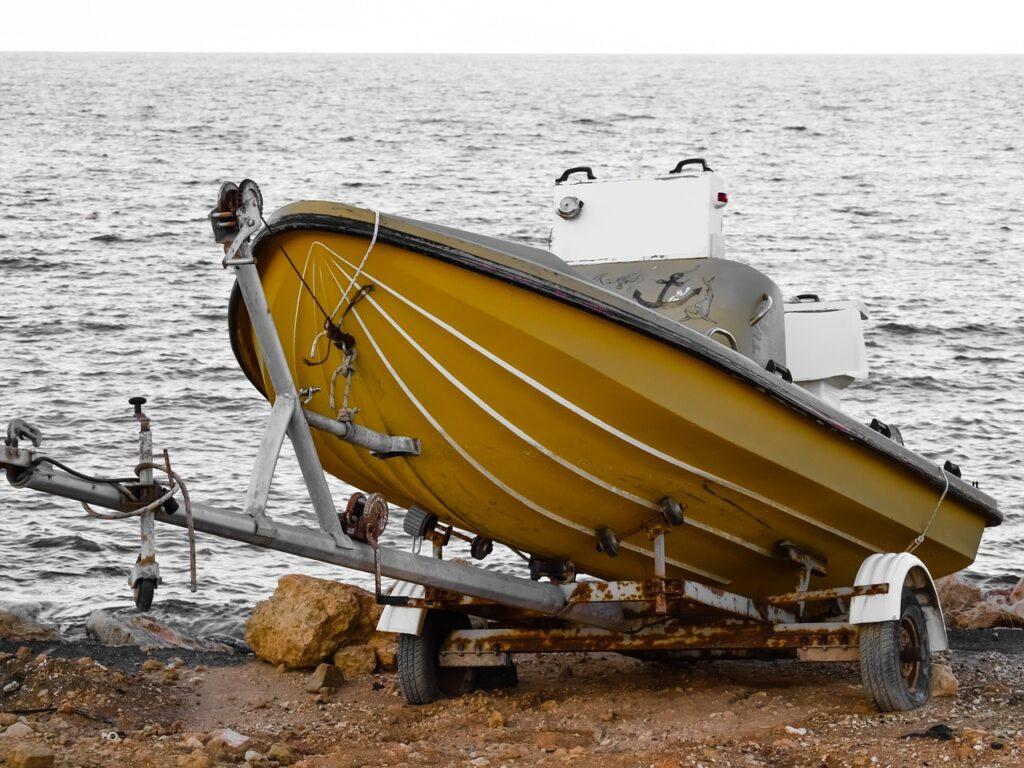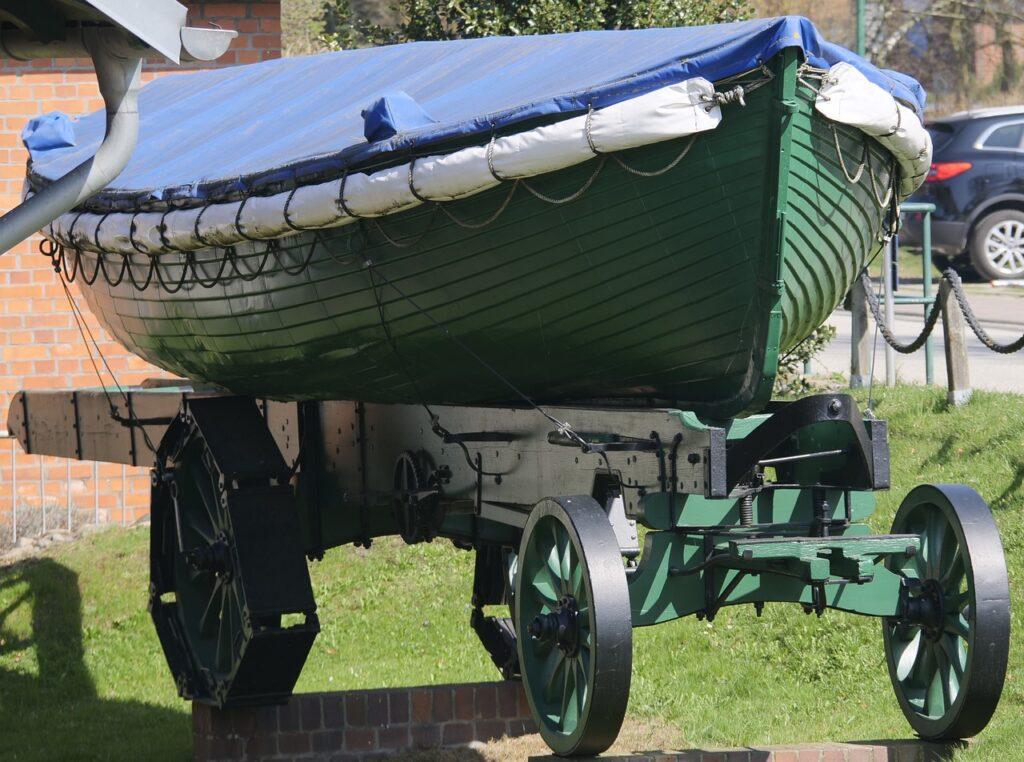How to Measure a Boat Trailer
Key Takeaways:
- To ensure safe and effective transportation of a boat, accurate measurements of the boat trailer are crucial. These measurements include the overall length, bed length, width, height, tongue length, bow stop position, weight capacity, GVWR (Gross Vehicle Weight Rating), axle weight rating, and load capacity.
- While assessing a boat trailer, it’s important to consider any additional features like pop-out awnings or bike racks. Checking for the working condition of lights and proper inflation and condition of tires is also essential.
- Regular maintenance, including checking for signs of wear, damage, and ensuring proper attachment of components like the trailer’s coupler, is key for the trailer’s performance and safety. It’s recommended to consult a certified mechanic for accurate determination of weight capacity and to have the trailer inspected if any damage signs are noticed.
Measurement is a critical part of the boat trailer purchasing process. Knowing how to accurately measure your boat trailer is essential for ensuring the trailer you purchase can safely transport your boat. In this article, we’ll provide an overview of the key measurements you need to consider when measuring a boat trailer.
How to Measure a Boat Trailer
Measuring a boat trailer is relatively straightforward. Measure the length of the trailer from the tongue to the back. Measure the width of the trailer from one side to the other. Measure the height of the trailer from the ground to the top of the frame. Make sure to measure each dimension twice to ensure accuracy. Once you have all three measurements, you will know the exact size of the boat trailer.
Overall Length: Start by measuring the total length of the trailer from the very end of the trailer tongue to the back end of the trailer.
Bed Length: Next, measure the length of the bed of the trailer where the boat rests. This is typically done from the back end of the trailer to the point where the bed meets the trailer tongue.
Width: Measure the width of the trailer from outside tire to outside tire. This gives you an idea of the overall width and can be crucial if you’re planning to navigate narrow spaces.
Height: To gauge the height, measure from the ground to the highest point on the trailer when it’s level. Be sure to include anything that sticks up, like guide posts or light bars.
Tongue Length: The tongue is the part of the trailer that attaches to your towing vehicle. Measure from the hitch to where it meets the bed of the trailer.
Bow Stop Position: Measure from the back end of the trailer to the bow stop, which helps to keep your boat in place. This measurement will help ensure your boat fits comfortably on the trailer.
You should also measure the wheelbase of the boat trailer. This is the distance between the center of the front wheel and the center of the back wheel. Also its nice to know how to center a boat on a trailer. Take the weight of the trailer into consideration. You must make sure the trailer you choose can handle the weight of the boat you intend to tow. Knowing the weight of the trailer and the weight of the boat you plan to tow is important to ensure safety and proper performance.
Check video we have found on Youtube:

How do you measure trailer length?
To measure the length of a trailer, you will need to measure from the front of the trailer to the back. Measure the total length of the trailer, including any overhang or extended parts. Make sure to measure in a straight line and record the measurements in feet.
If the trailer has any additional features such as a pop-out awning or bike rack, you will need to measure those as well, and add the measurements to your overall length. You can also measure the width of the trailer, by measuring the widest points from side to side. Make sure to measure in a straight line and record the measurements in feet.
Measure the Height of the Trailer
Once you’ve measured the length of the trailer, you’ll need to measure the height. To do this, measure the distance from the ground to the top of the trailer’s frame. It’s important to remember that the trailer’s tongue will add additional height to the trailer.
Measure the Width of the Trailer
The next step is to measure the width of the trailer. To do this, measure the distance from one side of the trailer to the other, not including the fenders. This measurement should be taken from the outside of the trailer’s frame. Read also our article about boat winch straps.
Measure the Tongue Length
The tongue length of a boat trailer is an important measurement to consider. This measurement should be taken from the center of the trailer’s hitch to the end of the tongue. This measurement is critical, as it will determine how far the trailer will need to be from the vehicle when towing.
Measure the Weight Capacity of the Trailer

To measure the weight capacity of a trailer, you will need to refer to the manufacturer’s specifications. This information can be found in the trailer’s owner’s manual or on the trailer itself. It is important to take into consideration the size and type of trailer, as well as any additional load-bearing components, such as axles, when determining the weight capacity. You should also consider the weight of the trailer itself, the weight of the load, and the weight of any passengers or cargo that may be riding in the trailer. Consulting with a qualified professional, such as a certified mechanic, can help ensure that you are accurately measuring the weight capacity of your trailer.
It is also important to verify that the trailer is properly rated for the weight capacity that you need. The trailer should also be checked for any damage or wear that may affect its performance. You should check to make sure that the trailer has been properly maintained, including any necessary repairs or replacements. Regular maintenance will help ensure that your trailer is able to handle the weight capacity that you need and that it remains safe to use.
Measure the Gross Vehicle Weight Rating (GVWR)
The Gross Vehicle Weight Rating (GVWR) of a boat trailer is an important measurement to consider. This measurement tells you the maximum amount of weight the trailer can safely carry, including the weight of the trailer itself. This measurement can usually be found in the trailer’s owner’s manual or on the trailer’s frame.
Measure the Axle Weight Rating
Another important measurement to consider is the axle weight rating of the trailer. This measurement tells you the maximum amount of weight each axle of the trailer can safely carry. This measurement can usually be found in the trailer’s owner’s manual or on the trailer’s frame.
Measure the Load Capacity
The load capacity of a boat trailer is another important measurement to consider. This measurement tells you the maximum amount of weight the trailer can carry, including the weight of the boat, trailer, and any additional cargo. This measurement can usually be found in the trailer’s owner’s manual or on the trailer’s frame.
Checking the Trailer’s Tires

Once you’ve measured the boat trailer, it’s important to check the trailer’s tires. Make sure the tires are in good condition and inflated to the manufacturer’s recommended pressure. You should also check the tire treads, as tires with insufficient tread will need to be replaced.
Checking the Trailer’s Lights
When measuring a boat trailer, it’s also important to check the trailer’s lights. Make sure all the lights are in working order and that the wiring is in good condition. This is especially important if you’re planning on towing the trailer at night.
Checking the Trailer’s Coupler
Another important step when measuring a boat trailer is to check the trailer’s coupler. Make sure the coupler is in good condition and securely attached to the trailer’s frame. You should also check the coupler for any signs of wear or damage.
Checking the Trailer’s Frame
Finally, it’s important to check the trailer’s frame for any signs of wear or damage. Be sure to look for any rust, cracks, or bends in the frame. If you notice any signs of damage, the trailer should be inspected by a professional before towing.
Conclusion
Measuring a boat trailer is an important step in the boat trailer purchasing process. Knowing the key measurements of a boat trailer is essential for ensuring the trailer you purchase can safely transport your boat. In this article, we’ve provided an overview of the key measurements you need to consider when measuring a boat trailer, including the length, height, width, tongue length, weight capacity, GVWR, axle weight rating, and load capacity.
FAQs
Why do I need to measure my boat trailer?
Knowing the dimensions of your boat trailer is important for several reasons. It can help you ensure that your boat fits properly, which is crucial for safe transportation. It’s also needed if you’re planning to store your trailer in a garage or storage facility, or if you’re thinking about buying a new or larger boat. Plus, it can be useful information to have when listing your trailer for sale or purchasing trailer accessories.
Can I measure my boat trailer by myself?
Measuring your boat trailer can be a one-person job. However, having a second person can make the process easier and more accurate, especially when measuring longer distances like the overall length of the trailer.
What should I do if my boat trailer is longer than the boat itself?
This is perfectly normal. Boat trailers are often designed to be longer than the boats they carry to provide extra support and stability. If you’re concerned about the fit, take the boat’s length into account when measuring the bed length of the trailer. The bow stop position, which is adjustable on many trailers, can also help ensure a proper fit.
